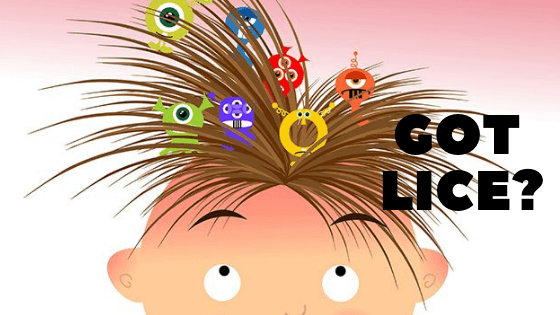Head Lice - The Common Problem
by Alice Smith Professional WriterProblem for Everyone
Head lice are minuscule and tiny parasitic insect that feed on human blood to get their daily nutrition, which causes itchiness and irritation on the human scalp. The problem of head lice is generally encountered by the people of all age groups. Whether one has long locks or short hair, lice growth can cause trouble for anyone and everyone.
Reasons for getting Lice
The question that remains to be answered is how do you get lice? The answer is Head lice are transmitted from one host to another through close personal contact. For the most part, this means that a non-infested person would have to be in head-to-head contact with an infected person. Sharing combs, brushes, towels, hats and other personal items can hasten the spread of head lice.

The louse travels by crawling. In rare cases, head lice can crawl onto a person’s clothing and on to another person’s hair and scalp, but this must happen quickly. Lice can’t live more than a day or so without nourishment.
Signs of having lice
In getting rid of lice in children, watch out for the first signs of an infestation. An adult louse is usually tan or a grayish white and is approximately the size of a sesame seed. Lice eggs, known as nits, have a brown, tan, or yellowish appearance and are extremely tiny. However, they can be seen with the naked eye. Lice typically lay these eggs close to the scalp, on hair shafts.
Sources of Lice
The source of the origin of lice is unhygienic environment, unkept, untidy hair and dust. Their main targets of attack are women and young kids from 3-11 years. As per the consensus about million of kids get infected every year. The most common and known way to spread are head to head contact and sharing clothing and personal belongings like combs, brushes, hats, scarves, helmets, hair ties etc.
Lice removal Treatment
Although treating a case of head lice is relatively simple, it requires some amount of tenacity. There are many over-the-counter-medicated shampoos, lotions and creams for kids available at most drug stores. Ask your physician for a recommendation, or for a prescription medication. Most medicated treatments attack the lice and nits and do little to nothing for the itching. Itching typically subsides within a few days.

Usage of anti-lice products
It is extremely important to know how to check for lice and use the products for the removal of lice responsibly and in a safe manner. Using the lice removal products excessively on a child's hair can lead to harmful side effects. Keep in mind that a treatment or product may not completely rid the scalp of lice and nits. This may be because the lice have become resistant to that medicine. After the treatment, it is advisable to comb through the hair with a fine-toothed comb regularly for a few days to get rid of remaining lice and nits.
To control the spread of lice, children need to avoid sharing hair brushes and other accessories with their classmates and friends. Close contact with the scalp and hair of others should be avoided. It is a good idea to look through the scalp and hair of all family members regularly and check if a family member has lice.
Concluding Statement
Having lice is a common problem among the people of all age group and the proper treatment of lice removal is pretty important. Lice do not have a direct adverse effect on the health, but it surely affects one’s personal hygiene.
NitPixies can give you an expert lice removal solution for getting rid of all the irritation.
About the Author
I am an author and blogger who writes my views on personal hygiene and wellness. In this article I have raised my opinion on a very common hygiene issue, i.e. the problem of lice and its remedial measures.
Sponsor Ads
Created on Aug 12th 2019 01:56. Viewed 298 times.



